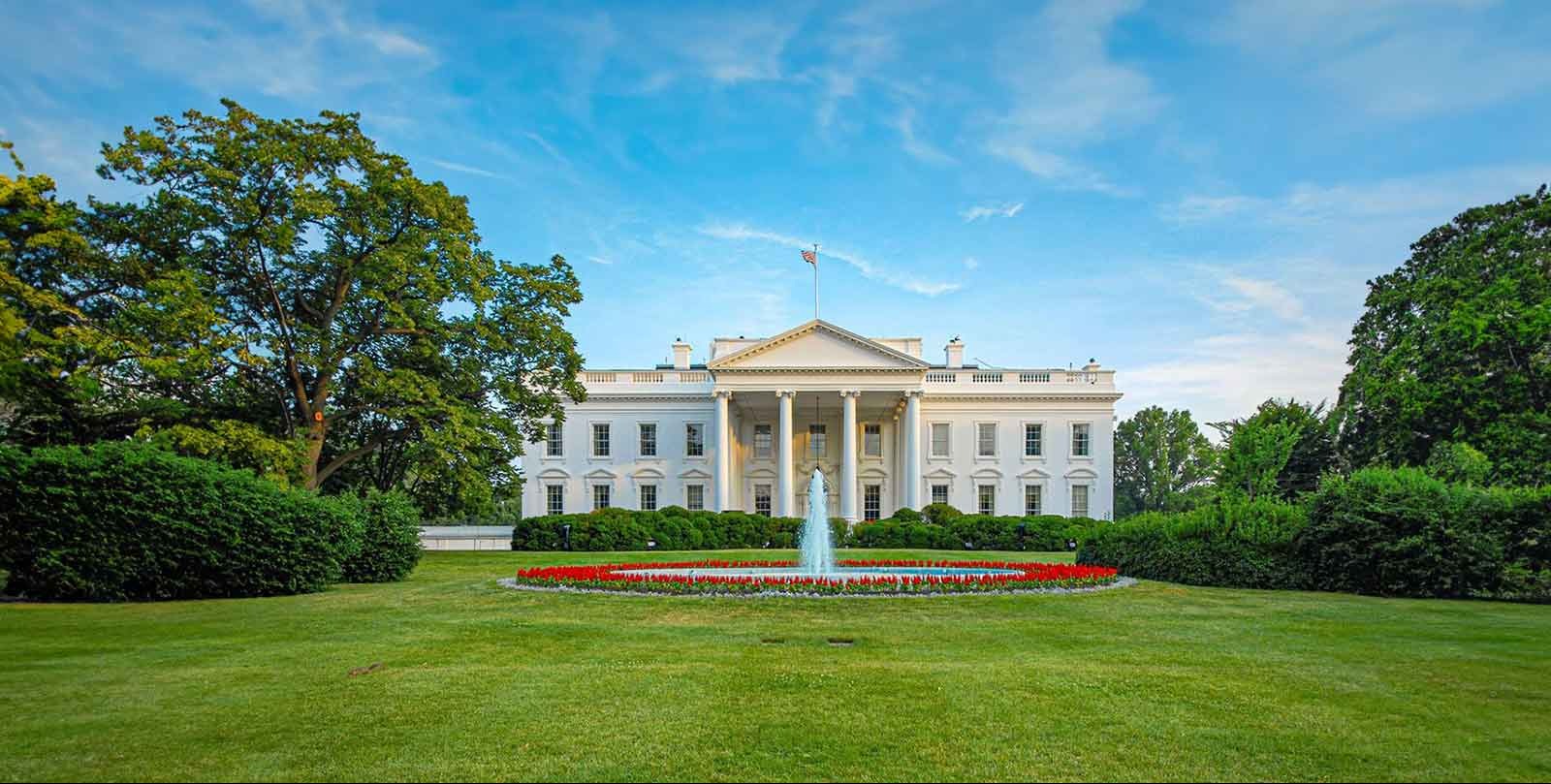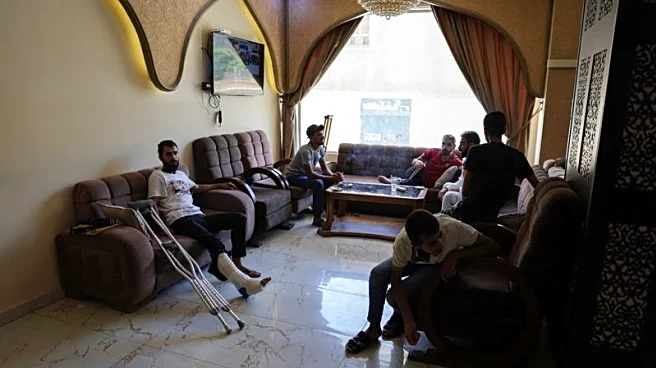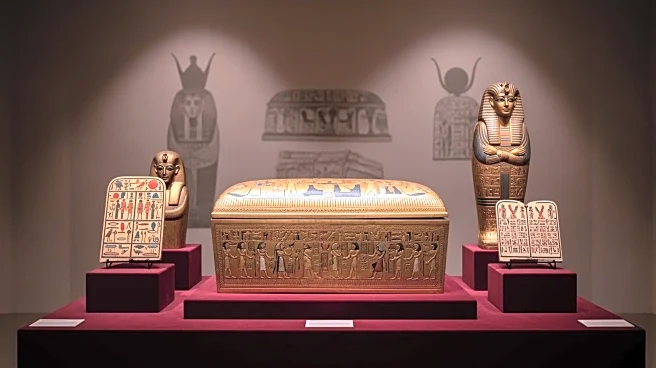What's Happening?
Thieves have stolen several ancient Roman-era statues from the National Museum of Damascus, Syria's largest museum, which houses invaluable antiquities. The theft was discovered early Monday, prompting the temporary closure of the museum. The museum had
reopened in January following the end of the Assad family's 54-year rule and amidst the country's ongoing civil war. Security measures, including metal gates and surveillance cameras, had been implemented to protect the museum's artifacts. An official from Syria's Directorate-General for Antiquities and Museums confirmed the theft of six marble statues, although the exact number remains undisclosed. The theft occurred Sunday night, with the classical department's door found broken. The museum section where the theft occurred contains artifacts from the Hellenistic, Roman, and Byzantine periods.
Why It's Important?
The theft of Roman-era statues from the National Museum of Damascus highlights the ongoing challenges faced by Syria in preserving its cultural heritage amidst political instability and conflict. The loss of these artifacts represents a significant blow to the country's historical legacy, which has already suffered due to the civil war and previous looting incidents. The theft underscores the vulnerability of cultural institutions in conflict zones, where security measures may be insufficient to prevent such crimes. The stolen artifacts are not only valuable in terms of their historical significance but also represent a potential loss of cultural identity for Syria. The incident may further complicate efforts to restore and protect Syria's cultural heritage, which has been threatened by both internal and external factors.
What's Next?
An investigation into the theft is currently underway, with officials from Syria's Directorate-General for Antiquities and Museums working to recover the stolen statues. The museum's temporary closure may lead to increased security measures to prevent future incidents. The theft may prompt international organizations and governments to offer assistance in safeguarding Syria's cultural heritage. Additionally, the incident could lead to heightened awareness and advocacy for the protection of cultural artifacts in conflict zones. The museum's reopening in January marked a new era for Syria, and the theft may impact future plans for cultural restoration and preservation efforts.
Beyond the Headlines
The theft of Roman-era statues from the National Museum of Damascus raises ethical and legal concerns regarding the protection of cultural heritage in conflict zones. The incident highlights the need for international cooperation and support to prevent the illicit trade of stolen artifacts. The theft may also have long-term implications for Syria's cultural identity, as the loss of historical artifacts can affect national pride and cultural continuity. The incident serves as a reminder of the importance of preserving cultural heritage for future generations, particularly in regions affected by political instability and conflict.















